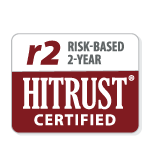Published on .
The tech platform a health plan utilizes to execute its medication adherence strategy makes all the difference in that strategy’s effectiveness. Technology adds immense value, allowing clinicians to carry out more accurate and personal engagements with each consumer during outreach. Given the wide range of approaches in the market today, from pharmacists working with spreadsheets to sophisticated software, our team is launching a blog series to highlight the benefits of a comprehensive tech-enabled approach and to share the main components to look for when investing in a tech platform to manage medication adherence.
Ultimately, the goal of deploying a unified and integrated platform is to give a health plan’s case management team or contracted clinicians a single powerful tool that works with them for seamless and timely engagements tailored to the individual’s needs. Just as a client relationship management (CRM) software enables businesses to better connect with their clients over time, the right medication adherence software can enhance clinicians’ outreach to consumers who likely need more than one touchpoint to become adherent. In this post, we’ll outline the core tech capabilities needed to target the right consumers at the right time.
Risk Identification and Stratification
A good tech platform for medication adherence starts with predictive analytics capabilities to identify target populations for engagement. This technology should contain a smart workflow with a rules engine built specifically to identify clinical quality measures and proactively target consumers at risk for medication non-adherence or gaps in care. That same rules engine should then stratify those consumers for outreach based on their level of risk across medication usage, drug therapy plans and more.
An advanced rules and analytics engine includes:
- Cloud-based execution for greater scale and security
- Ongoing and secure data ingestion of pharmacy and medical claims data for comprehensive evaluation
- Data reconciliation informed by daily consumer outreach for enhanced reporting of improvements and outcomes
Clinical Data Evaluation Capabilities
The workflow of risk identification goes hand in hand with the process of stratifying data against HEDIS and other quality measures to ensure alignment with established quality improvement practices. A rules engine must be built to make clinical evaluations of data based on established quality measures used by regulatory bodies for quality assurance.
This means the technology algorithms should be set to evaluate data against any or all of the following, depending on a plan’s needs:
- Pharmacy Quality Alliance (PQA) measures
- Healthcare Effectiveness Data and Information Set (HEDIS) measures
- Medicare Advantage (MA) Part C and D measures
- Customizable measures based on population needs
These components and capabilities work together within a smart workflow to determine next best action for outreach. Next, we’ll cover the importance of integrating intervention and pharmacy platforms into that same smart workflow to further streamline the outreach to address gaps in care and reduce costs with carve-in pharmacy services.
Subscribe to our blog to receive that post as soon as it’s available.
